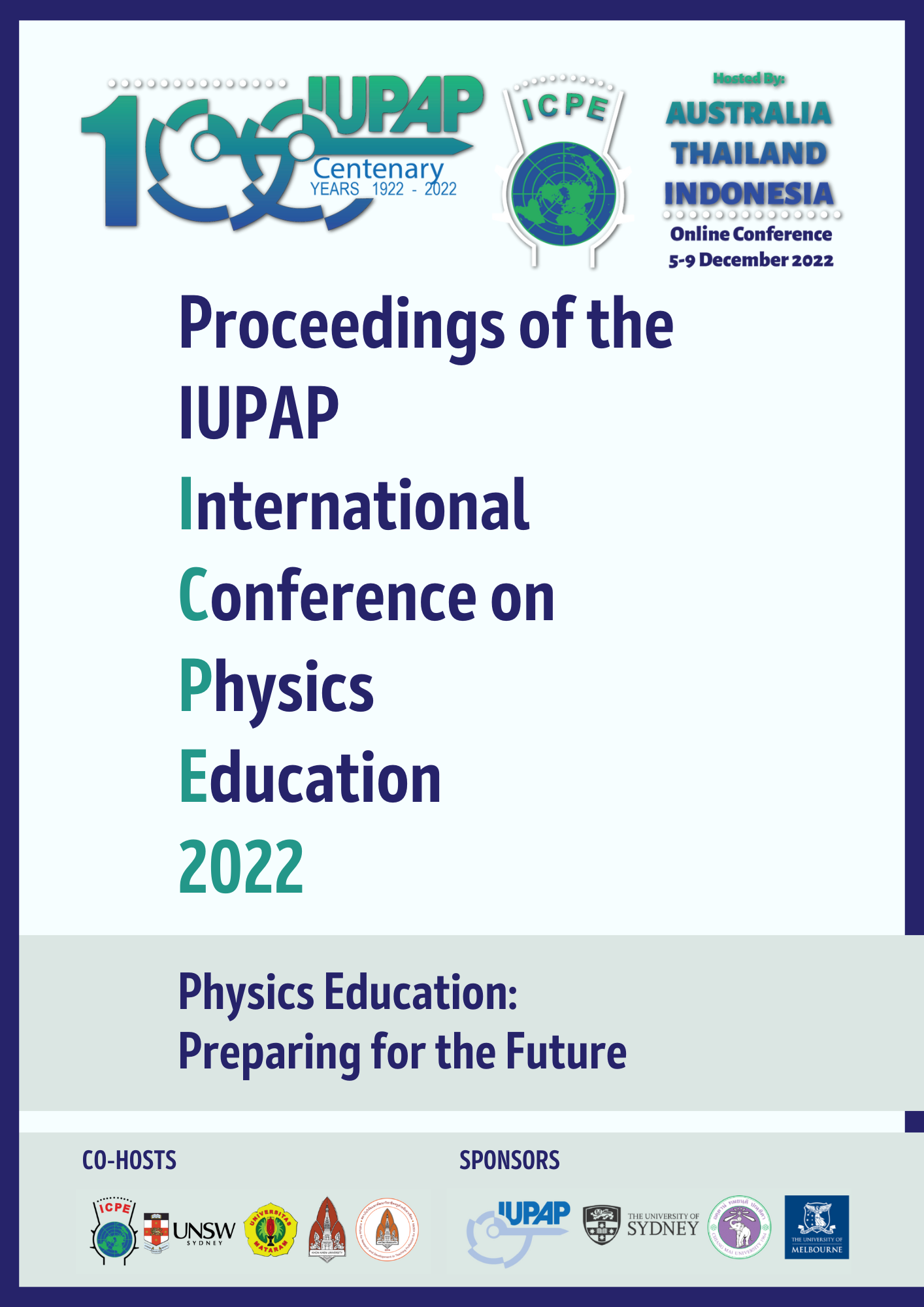Women perceive less peer recognition than men controlling for actual peer recognition
Keywords:
recognition, gender, identity, path analysisAbstract
Gaining recognition from peers is important for students’ development of physics identity – the extent to which they view themselves as a physics person (Carlone & Johnson, 2007; Hazari, Sonnert, Sadler, & Shanahan, 2010). Previous research, however, has found gender differences in both perceived and actual recognition: men perceive significantly more recognition from others (perceived recognition) than women (Hazari, Sadler, & Sonnert, 2013) and men receive significantly more nominations for being strong in their physics course from peers (actual recognition) than women (Bloodhart, Balgopal, Casper, Sample McMeeking, & Fischer, 2020). These findings suggest a few possible relationships between gender, perceived recognition, and actual recognition, each of which suggests different implications. For example, it could be that men perceive more recognition than women on aggregate because men and women have similar perceived recognition from peers at every level of actual recognition, but men receive more actual recognition than women. Such a relationship would imply that instructors must create more gender equity in actual recognition, for instance by providing more ways for women to gain recognition from peers. Alternatively, men might perceive more recognition than women at every level of actual recognition. This relationship would imply that either men over-estimate their actual recognition or women under-estimate their actual recognition, or a combination of the two. The instructional implication in this case would be to ensure that all students appropriately perceive recognition from peers.
We designed a study to determine these relationships using survey responses from students in introductory physics courses. We performed multiple different regression analyses relating gender, actual recognition from peers, and perceived recognition from peers. The best model revealed that controlling for actual recognition, women perceive significantly lower recognition from their peers than men (the second hypothesis above). These findings suggest that in order to decrease the gender difference in perceived peer recognition, and subsequently in physics identity, it is not sufficient to increase women’s actual recognition from peers. Instead, instructors must teach all students to appropriately acknowledge and internalize different forms of peer recognition in their physics courses, for example by teaching about intellectual humility (Sundstrom & Cardetti, 2021).
REFERENCES
Bloodhart, B., Balgopal, M. M., Casper, A. M. A., Sample McMeeking, L. B., & Fischer, E. V. (2020). Outperforming yet undervalued: Undergraduate women in STEM. PLoS One, 15(6), e0234685.
Carlone, H. B., & Johnson, A. (2007). Understanding the science experiences of successful women of color: Science identity as an analytic lens. Journal of Research in Science Teaching, 44(8), 1187-1218.
Hazari, Z., Sadler, P. M., & Sonnert, G. (2013). The science identity of college students: Exploring the intersection of gender, race, and ethnicity. Journal of College Science Teaching, 42(5), 82-91.
Hazari, Z., Sonnert, G., Sadler, P. M., & Shanahan, M. C. (2010). Connecting high school physics experiences, outcome expectations, physics identity, and physics career choice: A gender study. Journal of Research in Science Teaching, 47(8), 978-1003.
Sundstrom, M., & Cardetti, F. (2021). Exploring the introductory physics classroom through the lens of intellectual humility: Handling what you do not know. Physical Review Physics Education Research, 17(2), 020135.
Downloads
Published
Issue
Section
License
Authors who publish with the Proceedings of the International Conference on Physics Education 2022 agree to the following terms:
a) Authors retain copyright and grant the journal right of first publication with the work simultaneously licensed under a Creative Commons Attribution License (https://creativecommons.org/licenses/by/4.0/) that allows others to share the work with an acknowledgement of the work's authorship and initial publication in this journal.
b) Authors are able to enter into separate, additional contractual arrangements for the non-exclusive distribution of the journal's published version of the work (e.g., post it to an institutional repository or publish it in a book), with an acknowledgement of its initial publication in this journal.
c) Authors are permitted and encouraged to post their work online (e.g., in institutional repositories or on their website) prior to and during the submission process, as it can lead to productive exchanges, as well as earlier and greater citation of published work (See The Effect of Open Access - http://opcit.eprints.org/oacitation-biblio.html).
Privacy Statement The names and email addresses entered in the Proceedings of the International Conference on Physics Education 2022 site will be used exclusively for the stated purposes of this journal and will not be made available for any other purpose or to any other party.
